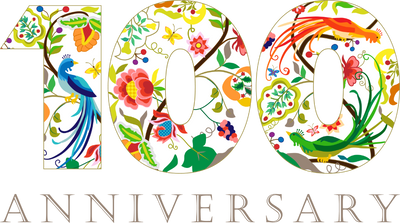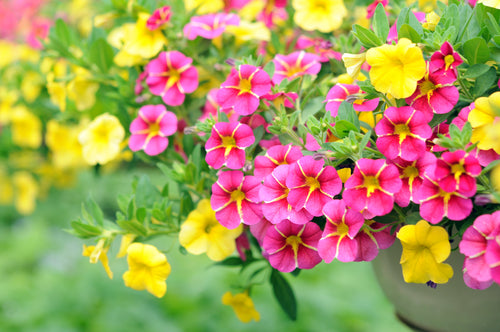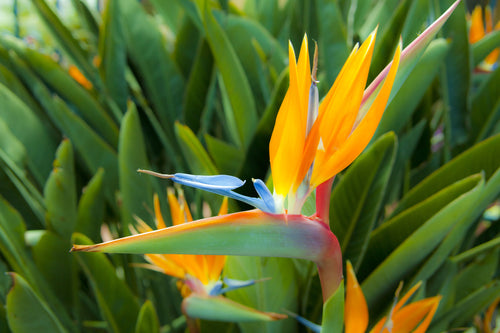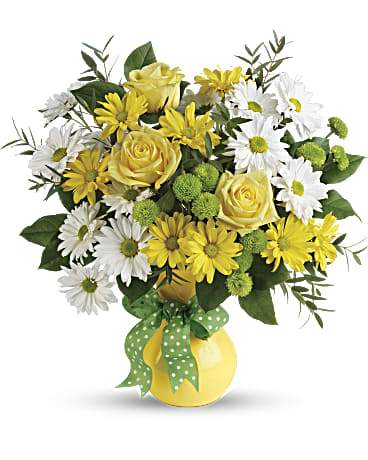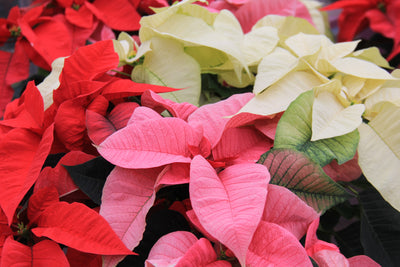Inexperienced gardeners often wonder why high quality potting mixes do not look like the rich, black loamy dirt found in lawns and gardens. Plants obviously thrive in this soil, so why not use it as a potting soil?
Many years ago, professional growers discovered that no matter how rich looking, field soils did not work well when growing plants in pots. When used in pots, the field soil stayed too soggy and caused roots to rot. Even though flowerpots had drainage holes, the bottom of the pot acted as a dam, discouraging drainage. They started mixing the field soil with peat moss, composted bark and perlite. This potting “mix” had more channels to allow for better drainage when used in pots. This solved one of the problems involved with using field soil.
The second problem was that because field soil could be contaminated with weed seeds, insects and plant diseases, it had to be sterilized before use – a time consuming and expensive process. Growers became dissatisfied and started making potting mixes without field soil. They called this a “soil–less potting mix”.
Over the years, growers perfected their soil–less mix formulas. Soggy soil, root rot, weeds and diseases were less of a problem. Many growers even stopped mixing altogether and started buying bagged pre–mixed potting soil.
Experienced home gardeners soon discovered the advantages of soil–less mixes. They were made with the same ingredients as mixes used by professionals. They had the proper balance of drainage and water retention. The acidity level was properly adjusted Soil–less potting mixes were free of weed seeds, insects and plant disease and were packaged in easy to handle bags.
Today, both professional growers and home gardeners enjoy the advantage of using soil-less potting mixes. Convenient and easy to use, soil–less potting mixes make it easier to become a successful gardener.
Pesche’s Professional Potting and Planting Mix is formulated by Fafard, Inc., a leading manufacturer of potting mixes for both professional growers and home gardeners. Made with the same components as professional mixes, Pesche’s Mix is based on a formula actually used by greenhouse growers.
Pesche’s Professional Potting and Planting Mix is a soil–less mix containing Canadian sphagnum peat moss, composted pine bark, horticultural vermiculite. Because it contains no actual field soil, Pesche’s Mix is free of weed seeds, plant disease organisms and insect pests. No sterilization is necessary – use it straight from the bag.
Pesche’s Professional Potting and Planting Mix is formulated to provide plant roots with the ideal physical and chemical properties needed to support plant growth. Physical properties govern aeration and water retention. Chemical properties influence pH and fertility.
Potting Soil Physical Properties
A potting soil can be thought of in terms of a sponge. Like a sponge, a potting soil consists of a solid matrix surrounding various sized holes or air spaces. When a potting is watered, all of the air spaces fill with water. After a short time, gravity starts to pull water out of larger air spaces, draining out of the pot. These larger air spaces refill with fresh air, providing oxygen for the plant roots. Soil scientists call these larger air spaces macro-pores. Smaller air spaces (micro-pores) in the potting soil do not drain after watering. This is the water that is used by the plant. The micro-pores are too small to be affected by gravity and hold their load of water due to force of capillary action. A potting soil must have the proper balance between macro-pores and micro-pores. Potting soil with too many macro–pores and too few micro–pores will drain excessively, retaining too little water. Such a potting soil will dry out rapidly and require frequent watering.
Conversely, a potting soil with too many micro–pores and too few macro–pores might retain too much water. The lack of larger air spaces would limit the amount oxygen available to the plant roots. This potting soil would stay soggy and would not support good plant growth.
The balance of micro and macro pores is achieved by adjusting the coarseness or fineness of the potting soils component particles. A potting soil made with all coarse particles will have many macro–pores and few micro–pores. Potting soil made with all fine particles will have many micro–pores and few macro–pores. To achieve the proper balance between aeration and water retention, the potting soil must be formulated with the proper balance of coarse and fine particles.
Potting Soil Chemical Properties
The most important chemical property of potting soil is pH. A measure of degree of acidity or alkalinity, pH is measured on a scale of 1—14. 1 is very acidic, a ph of 14 is very alkaline, and a pH of 7 is neutral—neither acidic nor alkaline. With a few notable exceptions, most plants grow best when the potting soil pH is slightly acid—pH 5.5 to 6.5. Potting soil pH is adjusted by mixing in limestone, a mineral that neutralizes acidity. If to little limestone is added to the potting soil, the pH might be below 5.5—too low. Too much limestone could result in a ph of above 6.5—too high.
A second important chemical property is potting soils soluble salt level. A soluble salt test measures the amount of fertilizer contained in the potting soil. Potting soil containing little fertilizer would measure low in soluble salts. Excessive fertilizer in the potting soil would result in high soluble salts.
It is important that potting soil contain a moderate soluble salt level. If too low, the plant would lack fertilizer and not grow well. If soluble salts are too high, plant root damage can result.
Because Pesche’s Professional Potting and Planting Mix is based on a formula used by professional growers, its physical and chemical properties are adjusted to be in the ideal range. It neither stays too wet nor dries out too quickly. pH is adjusted to the range required by most plants and it contains enough fertilizer to last a few weeks. When using Pesche’s Professional Potting and Planting Mix , home gardeners will get their plants off to a good start.

